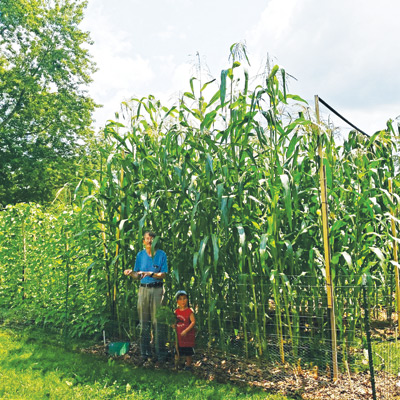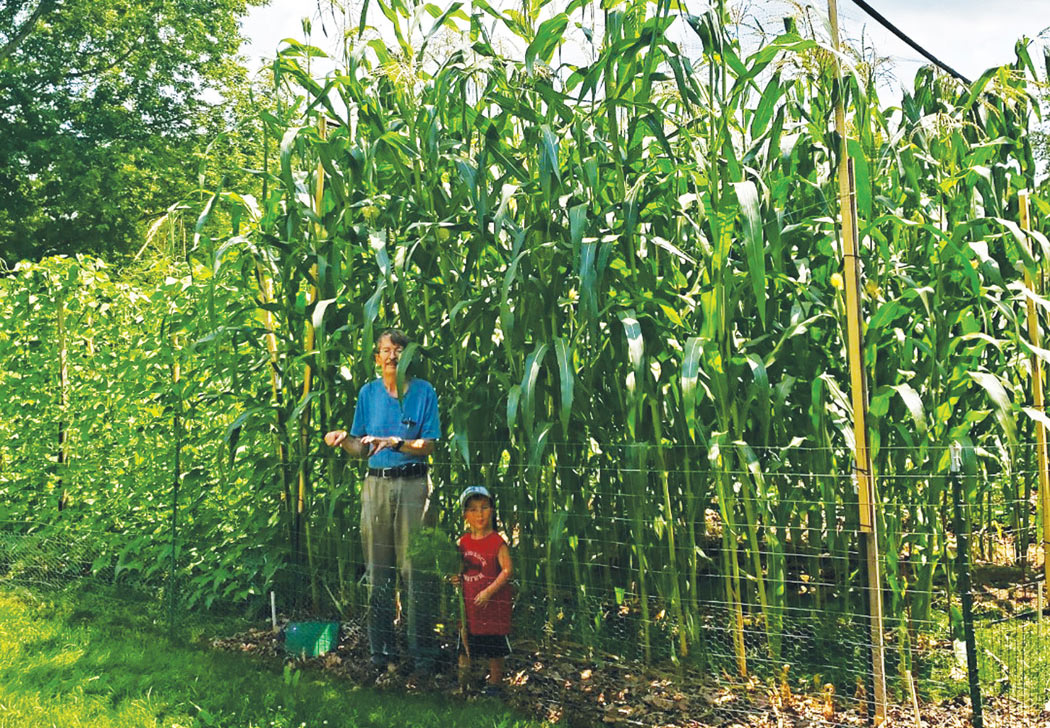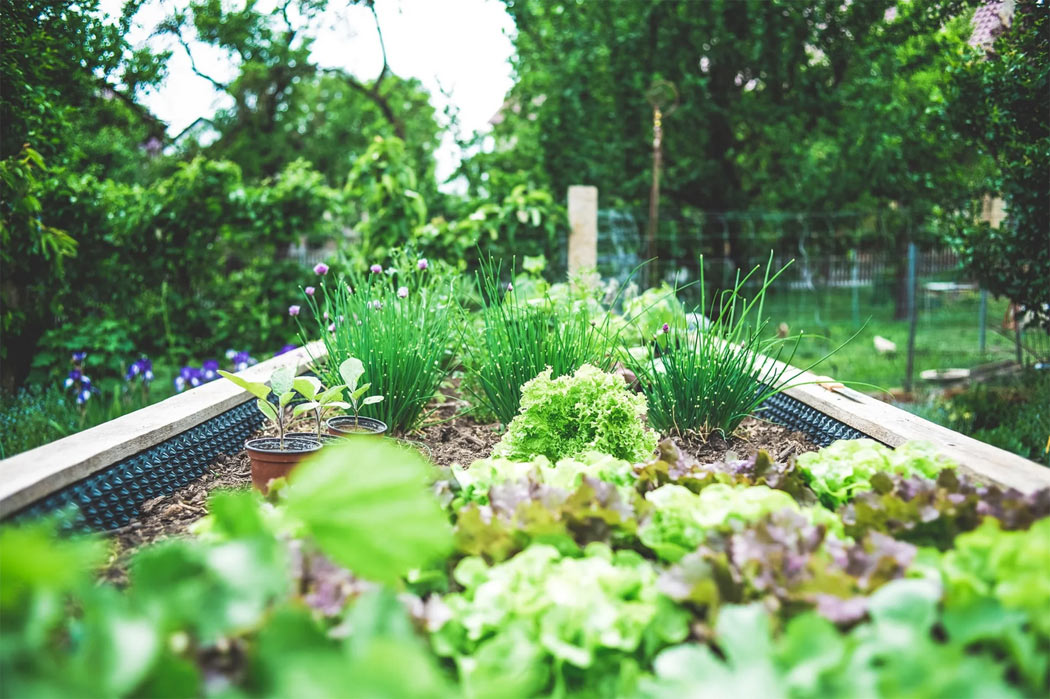Media
Podcast
Greg Peterson’s Urban Farm
Our Guest: David is primarily a botanist. He received a B.S. in Biology from North Carolina State University, and an M.S. and Ph.D. in Botany from the University of Wisconsin. He then served as a research scientist at the USDA Forest Experiment Station in Rhinelander, Wisconsin, and was a Humboldt fellow at the University of Gurtingen, Germany. Prior to joining the faculty of Maharishi International University (MIU), he was a professor and researcher at the University of Hawaii. Since leaving MIU, he now devotes his time to sustainability research and writing.
Podcast
Flocities with Leanne Gluck and Lonnie Gamble
We talk with Dr David Fisher about his new book Just Grow It Yourself. We explore the surprising efficiency and efficacy of self-sufficiency gardens. David argues persuasively that self-sufficiency gardens are a robust solution for cities that want to grow all the food they consume. David designs and grows self-sufficiency gardens that, in one growing season, can meet all your food needs for a year.
David has a Phd in biology and has worked in Germany, Hawaii, and Iowa. He has been teaching and developing academic programs about sustainability for decades and was most recently the department head of the Sustainable Living Department at Maharishi International University. The Sustainable Living Department was rated one of the top three environmental science programs in the US.
Reviews
 Must read!
Must read!
Just Grow It Yourself – Home Gardens Outshine Industrial Food
 A very persuasive argument on why you can and should start a self-sufficiency garden wherever you are!
A very persuasive argument on why you can and should start a self-sufficiency garden wherever you are!
Feature in Reedsy, Review by Kareen Hewitt
From taste and nutrition to cost, safety, and yield, Just Grow It Yourself contrasts home and industrial food production head to head. Its startling conclusion: per pound of food production, self-sufficiency gardens are vastly more efficient while delivering far greater health, economic, social, and environmental benefits. This book proposes a new, three-tiered system, anchored in home and community gardens backed by locally and distantly sourced food. It contends that this redesigned system has much greater potential for alleviating food insecurity than industrial food. Most encouraging is the message that self-sufficiency gardens will help reconnect us to ourselves, one another, and nature in a way that all of us can relate to on the most personal level: growing and consuming some to most of our food.
Just Grow It Yourself by David Fisher dares to challenge the industrial food system. While a courageous and lofty goal, to his credit, he does justice to the topic, and readers will be convinced that self-sufficiency gardens are the better option. If you are interested in learning more about starting your own garden, why it is the healthier alternative, and the challenges we will face ignoring this option, then you must read this book!
Fisher starts off his book with a very thought-provoking interview with Americans. An interview that will get readers thinking about the cost of depending on the industrial food complex. This makes his thesis clear from the get-go. His goal is to inspire potential gardeners as well as motivate policymakers and change-makers to look at the vast potential that lies in self-sufficiency gardens. While many complain about inefficiencies in the distribution link that have left our store shelves empty, Fisher produces a solution that is so simple it is often overlooked.
Further, Fisher makes slam-dunk points that will knock any excuse about why it cannot be done – out. He does this by supplying the reader with information and data that will make any intelligent person seriously consider self-sufficiency gardens as a viable alternative to the mega-industrial food system. Self-sufficiency gardens support a sustainable environment with their energy efficiencies. They also promote a healthier diet that could reduce morbidity and mortality rates and teach the young a very valuable skill. This book makes the emphatic point that self-sufficiency gardens can do much more for us than the industrial food complex.
On the downside, Fisher often makes his points by using countries that have questionable political policies, like Cuba, to prove his points. Nonetheless, I think his cogent arguments are persuasive. However, this could make some readers skeptical as they might view the writer’s points through a particular political prism.
Even so, I found this book to be very interesting. It is packed with information to help novice gardeners and policymakers craft ideologically sound policies that are backed by data-driven results. As such, I believe every policymaker should receive a copy.
In fact, I would recommend this book to everyone. You can start a garden wherever you are!
Articles
 Update: “Garden Super-Size Me” Growing Tips
Update: “Garden Super-Size Me” Growing Tips
Feature in The Iowa Source
By David Fisher

Bounty from the garden: peas, beans, and corn (photo by David Fisher)
Do you recall the photo of 14-foot-high corn stalks towering over me and my little friend Maximo on the October 2021 cover of The Iowa Source? In “Garden Super Size Me,” I described how I had planted a garden that would produce enough food to last me for a year. But at the time the October issue went to press, I had harvested only enough to last me about 8 ½ months.

The extraordinary tall corn from David Fisher’s garden
It wasn’t until early November that I’d hauled in the last of the Irish potatoes, green beans, sweet potatoes, and okra. The full harvest, illustrated in Table 1 below, shows that the 35-by-40-foot garden produced over 1,000 pounds of vegetables, totaling 3,511 portions. At three portions per meal, three times a day, that’s 107 percent of the 3,285 needed to last me a year.
However, I discovered that even though I planned for the calorie-dense vegetables to outweigh those that were calorie sparse, I came up with only about 60 percent of the calories per year that I needed for my Basal Metabolic Rate, which is based on a person’s height, weight, gender, age, and activity level.
The main reason was that I had assumed that corn, beans, sweet potatoes, Irish potatoes, and winter squash were all calorie dense. However, I found that only dried corn and beans are truly calorie dense (about 1,600 calories per pound), with sweet potatoes coming in with about a third as much. I also found that the protein content in the dried beans, corn, and potatoes I grew was less than optimal. (Per ounce of dry weight, potatoes have as much protein as human mother’s milk.) However, requirements for protein are not as well-defined as calorie needs.
Read Full Article >>
 New book:
New book:
How Home Gardens Outshine Industrial Food
Feature in The Organic and Non-GMO Report

Among scores of gardening books, Just Grow It Yourself is also unique in:
- Suggesting that the most important measure of a self-sufficiency garden’s worth is how long it would support a person if all their food came from it.
- Illustrating how and why self-sufficiency gardens could become the major source of our food.
- Proposing that home and community gardens replace food banks and other temporary, disempowering solutions to alleviating hunger for the food insecure.
- Asserting that self-sufficiency gardens are our best hedge against food scarcity in the face of climate change, natural disasters, economic downturns, and other threats.
Elizabeth Sahtouris, Ph.D., evolution biologist and futurist, and the author of Gaia’s Dance, notes that “The subtitle of this book says it all: Home Gardens Outshine Industrial Food! As Big Ag and Big Food unite to bring us toxic food that wrecks our immune systems, this book shows us the only way back to health! The solution is actually right in our own hands, will mitigate climate change by reducing demand for industrial food, and can even bring us real joy!”
Just Grow It Yourself is available on Amazon and Barnes and Noble.
Organic & Non-GMO Insights December 2021
 The Efficiency of Home Gardens Compared to Industrial Farms
The Efficiency of Home Gardens Compared to Industrial Farms
Feature in Unsustainable Magazine
There was a time when we all ate produce that was locally grown, even grown by ourselves in our own gardens, but today it is largely industrial farms that are feeding the planet, at least in those countries that are more developed. The average person in these countries might be inclined to believe that we can no longer sustain ourselves by growing our own produce, and that industrial farms are simply more efficient, but is this actually the case? Or can self-sufficiency gardens be just as efficient?
Home Gardens Outshine Industrial Food
By David G Fisher
I’d been gardening off and on—when I wasn’t being a student, sailor, German scholar, or a botany prof in Hawaii—ever since I was about ten. That inner drive to grow resumed in earnest when I moved from Hawaii to Fairfield, Iowa and started up a prodigious little plot of corn, butterbeans, tomatoes, and winter squash. Then two things happened.
First, Covid-19. It triggered me to think, Well, really, everyone should start a garden. Just in case the resulting upset to the food system, with sudden unemployment and long lines at food pantries, began to get serious. So I put my forty years of experience in pure and applied botany into writing a book1 about 21st-century “victory gardens.” Believe it or not, many younger people are unaware of the 20 million gardens that produced some 40 percent of our vegetables during the latter stages of World War Two.
Then the second shoe dropped. To my astonishment, I found that I’d been telling a big lie during my years of teaching college environmental science and sustainability. Namely, that the industrial food system, despite a few nagging problems with pollution and soil erosion, was a marvel of efficiency, precision, and convenience. Every supermarket in the land stocked with thousands of items featuring reliable, just-in-time delivery. What a stupendous accomplishment of modern technology and energy efficiency, rendering the backyard garden a cute but pitiful source of food.
Read Full Article >>
 Garden Super Size Me:
Garden Super Size Me:
The Bounty & Benefits of Homegrown Food
Feature in The Iowa Source

David Fisher and his young friend Máximo Lussich shelter in the corn’s shade during the height (14 feet!) of the garden’s bounty.
Since the age of ten, when I wasn’t busy being a student, a sailor, a German scholar, or a botany prof in Hawaii, I’ve managed to find time to garden. And I’ve continued to pursue that inner drive with a prodigious little plot of corn, butterbeans, tomatoes, and winter squash on the MIU campus in Fairfield.
Then a couple things happened.
Victory Gardens
First, COVID-19. That triggered me to think that everyone should start a garden, just in case the resulting upset to the food system should become serious. So I put my 40 years of experience in botany into writing a book about 21st-century “victory gardens” called Just Grow It Yourself. Believe it or not, many younger people are unaware of the 20 million gardens that produced 40 percent of our vegetables during the latter stages of World War II.
Then the second shoe dropped. To my astonishment, research revealed that I’d been telling a big lie during my years of teaching college environmental science and sustainability. Namely, that the industrial food system, despite a few nagging problems with pollution and soil erosion, was a marvel of efficiency, precision, and convenience. It kept every supermarket in the land stocked with thousands of items, with reliable, just-in-time delivery. What a stupendous accomplishment of modern technology and energy efficiency, rendering the backyard garden a cute but pitiful source of food.
Or so it seemed.
I discovered that despite the scores of gardening books and articles extolling the virtues of bountiful home-grown vegetables, apparently no one had ever thought to compare the efficiency, per pound of food produced, of self-sufficiency gardens to the industrial food system, measuring everything from taste and nutrition to cost, safety, energy consumption, and yield.
Read Full Article >>
Press Release
Botanist and Author David G. Fisher Releases New Book on How Home Gardens Outshine Industrial Food
Botanist and author David G. Fisher, PhD, is releasing his new book, Just Grow it Yourself – Home Gardens Outshine Industrial Food. It describes how surprisingly well self-sufficiency gardens stack up against the industrial food system.
The real cost of the food in the local supermarket is far more than what you pay at the checkout counter. In his new book, Just Grow It Yourself, botanist and author David G. Fisher compares self-sufficiency gardens to industrial food head to head, from taste and nutrition to cost, safety, and yield. Contrary to the popular narrative, he concludes that per pound of food production, self-sufficiency gardens are vastly more efficient than the industrial food system while delivering far superior health, social, economic, and environmental benefits. The principal cause of this finding is the $trillions in external costs the industrial food system incurs but doesn’t pay for, and the fact that self-sufficiency gardens incur very low internal as well as external costs.
Among scores of gardening books, Just Grow It Yourself is also unique in:
- Suggesting that the most important measure of a self-sufficiency garden’s worth is how long it would support a person if all their food came from it.
Illustrating how and why self-sufficiency gardens could become the major source of our food. - Proposing that home and community gardens replace food banks and other temporary, disempowering solutions to alleviating hunger for the food insecure.
- Asserting that self-sufficiency gardens are our best hedge against food scarcity in the face of climate change, natural disasters, economic downturns, and other threats.
In exploring the feasibility of massively scaling up self-sufficiency gardens, Fisher looks back to the days of victory gardens during World War II. These gardens were common in the United States, Canada, Australia and Great Britain. At the time, countries needed extra efforts to feed citizens and the military. People used every available option to grow something. However, victory gardens largely disappeared after the war.
Fisher argues that self-sufficiency gardens on that wide scale should return. They have a wide range of benefits, including better taste, increased sustainability, survival value, and personal growth. He brings more than 40 years of experience as a gardener, botanist, crop breeding researcher, and innovator in sustainability education to the daunting challenge of redesigning food systems from the ground up.
He proposes a new, three-tiered food system strongly anchored in home and community gardens, sustainably backed up by local and distantly sourced food. Most encouraging is his message that self-sufficiency gardens will help re-connect us to ourselves, one another, and nature in a way that all of us can creatively relate to on the most personal level: growing and consuming some to most of our food.
Elizabeth Sahtouris, Ph.D., evolution biologist and futurist, and the author of Gaia’s Dance, notes that “The subtitle of this book says it all: Home Gardens Outshine Industrial Food! As Big Ag and Big Food unite to bring us toxic food that wrecks our immune systems, this book shows us the only way back to health! The solution is actually right in our own hands, will mitigate climate change by reducing demand for industrial food, and can even bring us real joy!”
Just Grow It Yourself is available on Amazon and Barnes and Noble.


 Must read!
Must read! A very persuasive argument on why you can and should start a self-sufficiency garden wherever you are!
A very persuasive argument on why you can and should start a self-sufficiency garden wherever you are!


